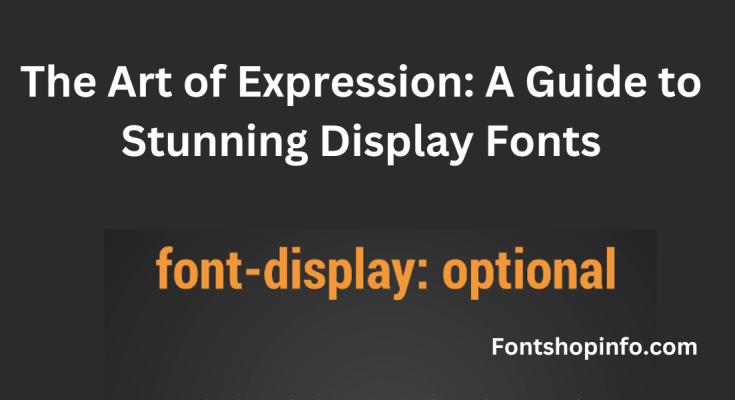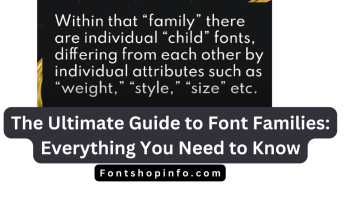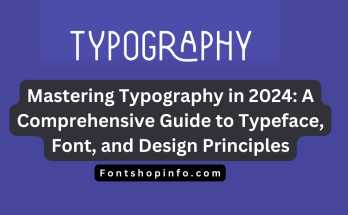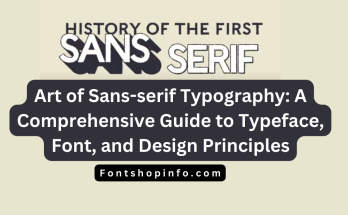Display fonts
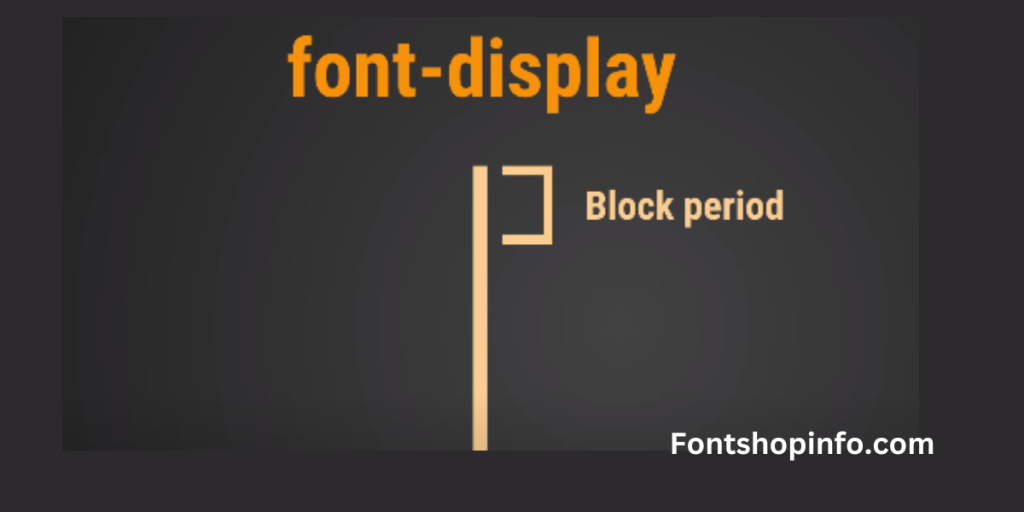
Display fonts are a family of type designs that have been created to function in large-format applications, such as billboards or posters.
They are not long paragraphs to be read but rather catch the eye and make a statement. Display fonts can be made in many different styles like serif, sans serif, script, slab serif, etc Decorative features may also include swashes, ligatures, ornaments, and alternates.
Guide to Font Families
This article focuses on some of the features, instances, and guidelines for using display fonts. We will also demonstrate how to locate and download free graphic display fonts for your projects.
Characteristics of Display Fonts
Display fonts share some common features that can be applied in large-scale or short-form designs. Some of these are:
- High contrast: This produces a dramatic and visually striking result like Walbaum and Beyond Wonderland.
- Distinctive shapes: So, display fonts usually have rather individual shapes that make them different from other fonts. They may be curved, or angled or they can have prominent serifs and terminals in the case of Raleway and [Carnivaleslee Freakshow].
- Large x-height: Typically, display fonts have a high x-height – that is the height proportional to lowercase letters.
- Limited kerning and tracking: The kerning and tracking in display fonts are usually limited, which refers to the adjustments of spacing between letters as well as words. This results in a close and densely-packed appearance as illustrated by [Waltograph],[Chopin Script].
- Variety of weights and styles: Display fonts are usually available in many weights and styles, including bold or italic, regular, etc. This allows them to become more flexible and versatile like in [Helvetica Now] and [Adine Kirnberg].
Examples of Display Fonts
Here are some of the popular and modern display fonts that you can find online:
Creation: A sketchy handwritten script font that has a light-hearted and whimsical feel. It is ideal for logos, posters, invitations, and so on.
Grinched: A playful and celebratory font based on the timeless Dr. Seuss tale. it is great for Christmas cards, posters, and decorative purposes.
Southam: Futuristic and minimalist geometric sans serif. It is good for title headlines, logos, and posters.
Beyond Wonderland: In a Gothic and horror style with an eerie and mysterious feel. It is appropriate for book covers, flyers, and Halloween projects.
Walbaum: An elegant, refined didone font. It is for magazines, fashion, and luxury brands.
Best Practices for Using Display Fonts
Display fonts can be a real eye-catcher and improve your project but have their considerations to keep in mind. Here are some of the best practices for using display fonts:
- Use them sparingly: Display fonts are not designed for long texts or small sizes. 0 are most suitable for short-form applications like titles, headings, and logos. On the other hand, too many display fonts may turn your design into a chaotic mess.
- Pair them wisely: Fonts for displays can be combined with other font styles to achieve contrast and balance. However, not all fonts sound good together. Avoid pairing a display font with other display faces as they tend to clash for attention and bring confusion. Instead of that, you should use display fonts in combination with simple and neutral ones like sans serif or serif font as they can well offset each other.
- Match them with the mood: Display fonts can depict different moods and emotions, such as funny elegant scary, or futuristic. Your display font should match your project’s mood and its audience. For instance, you should never use a Gothic typeface for children’s storybooks or whimsical font in serious reports.
- Customize them if needed: Some display fonts are adjustable and can be configured as per your requirements. You can edit the color, size, alignment, and so forth of a font to make it just right for your project. You may also employ ornamental attributes such as swashes, ligatures, and decorations to add some personal touch to your display font.
How to Find and Download Free Display Fonts
There are several websites where one can obtain free display fonts for use in his or her projects. Some of the best websites to find and download free display fonts are:
- [1001 Fonts]: It is very easy to view, preview, and download the fonts.
- [MyFonts]: 130, 256 fonts from hundreds of online foundries and designers. There are free and paid display fonts as well as some special offers and bundles.
- [FontSpace]: A website that has more than 40,00n free fonts from so many of the font creators. They come from various genres and themes, including retro, comic wedding, etc.
- [DaFontinfo]: 40, 029 free fonts with all types and styles. Display fonts are available in various styles and subject matters including fancy, horror, cartoon, etc.
- [Google Fonts]: 1009 free web-based downloadable fonts for both desktop and mobile devices. Display fonts can be found in an array of styles and languages, but they are also easily customized for your use.
Conclusion
Fonts that have large-format and short-form functions are known as display fonts. These include billboards, posters shows, logotypes of big companies and book covers can be feature among others.
They share some typical features, such as the high contrast environment, unique shapes with large x-height and hardly ever kerned or tracked; they vary by their weights and styles.
They may also have decorative elements such as swashes, ligatures ornaments, and alternates.
Fonts for display purposes can help bring life to your projects and make them stand out, but some choices need to be made carefully.
Use them sparingly, pair wisely, match the mood, and customize if necessary.
FAQ
What are Display Fonts?
Display fonts are a type of design family specifically crafted for large-format applications such as billboards, posters, and other visually impactful mediums. Unlike traditional fonts for lengthy paragraphs, display fonts are intended to catch the eye and make a bold statement. They come in various styles, including serif, sans-serif, script, and slab serif, often featuring decorative elements like swashes, ligatures, ornaments, and alternates.
What are the Characteristics of Display Fonts?
Display fonts share several characteristics, including high contrast, distinctive shapes, a large x-height, limited kerning and tracking, and a variety of weights and styles. Examples of display fonts with these features include Walbaum, Beyond Wonderland, Raleway, and Adine Kirnberg.
Can you provide Examples of Popular Display Fonts?
Certainly! Some popular modern display fonts include:
- Creation: A whimsical handwritten script font suitable for logos, posters, and invitations.
- Grinched: A playful font inspired by Dr. Seuss, ideal for Christmas cards and decorative purposes.
- Southam: A futuristic and minimalist geometric sans serif perfect for titles and logos.
- Beyond Wonderland: A Gothic and horror-style font suitable for book covers and Halloween projects.
- Walbaum: An elegant didone font ideal for magazines, fashion, and luxury brands.
What are the Best Practices for Using Display Fonts?
- Use them sparingly: Display fonts are best suited for short-form applications like titles, headings, and logos.
- Pair them wisely: Combine display fonts with simple and neutral fonts to achieve contrast and balance.
- Match them with the mood: Ensure that the chosen display font aligns with the intended mood or emotion of your project.
- Customize if needed: Some display fonts are adjustable; customize color, size, alignment, and ornamental attributes to fit your project.
